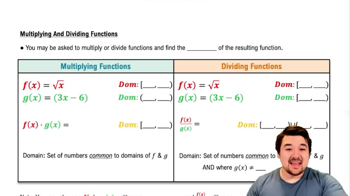A general proof of the Chain Rule Let f and g be differentiable functions with h(x)=f(g(x)). For a given constant a, let u=g(a) and v=g(x), and define H (v) = <1x1 matrix>
c. Show that h′(a) = lim x→a ((H(g(x))+f′(g(a)))⋅g(x)−g(a)/x−a).
 Verified step by step guidance
Verified step by step guidance Verified video answer for a similar problem:
Verified video answer for a similar problem:



 5:02m
5:02mMaster Intro to the Chain Rule with a bite sized video explanation from Patrick
Start learning